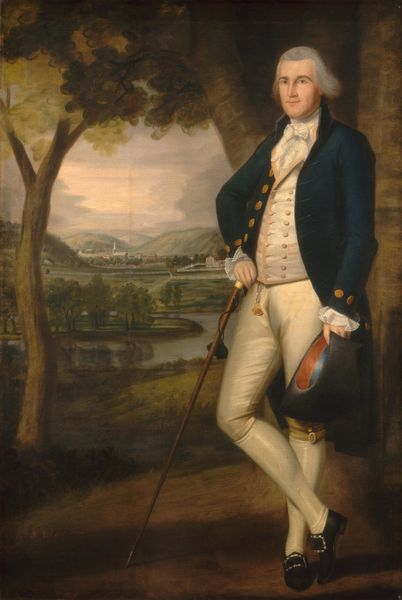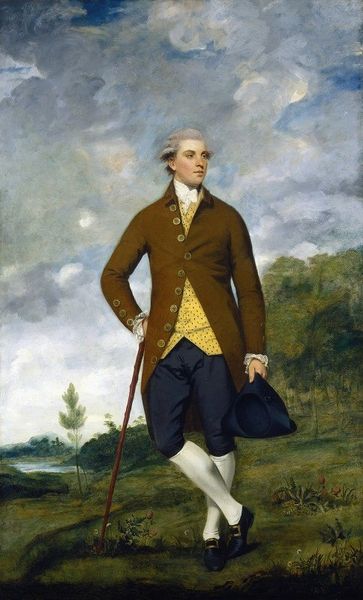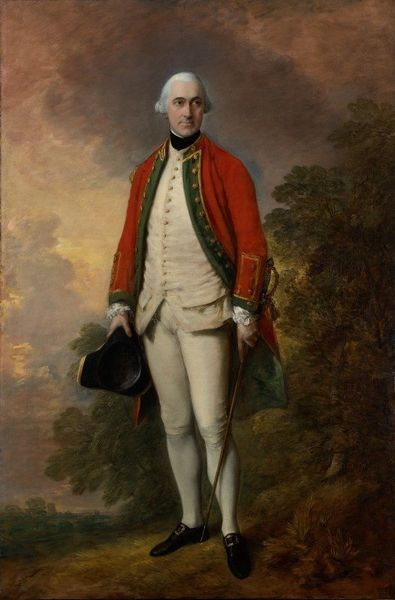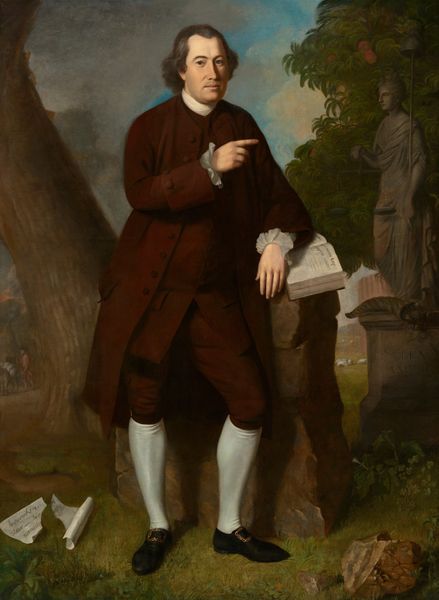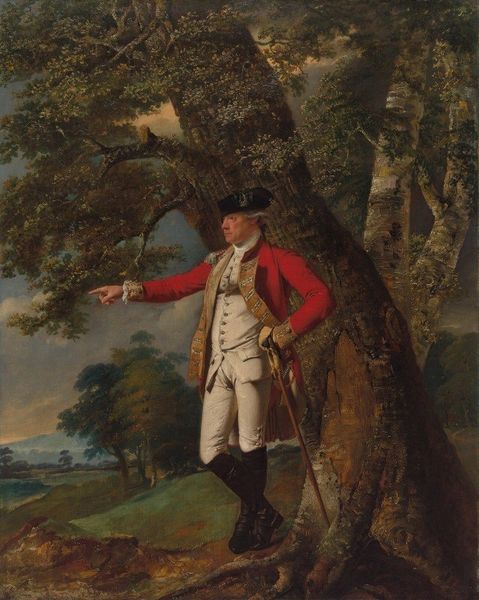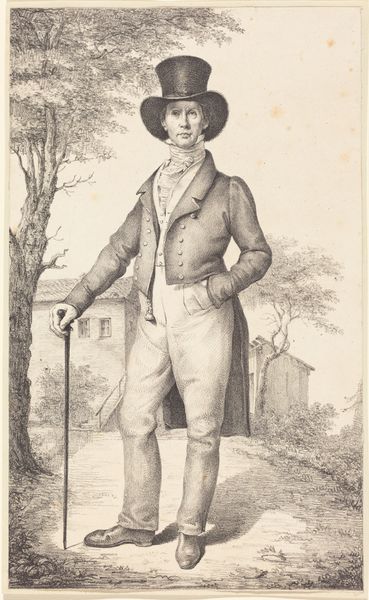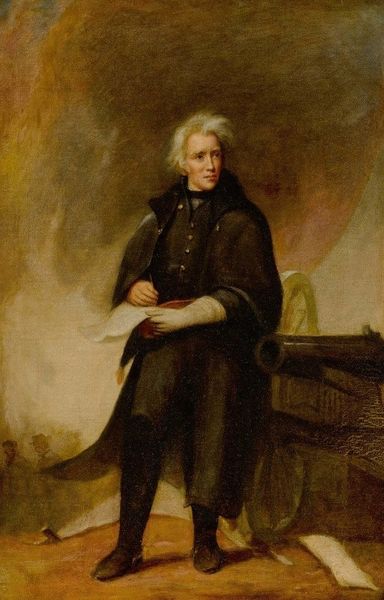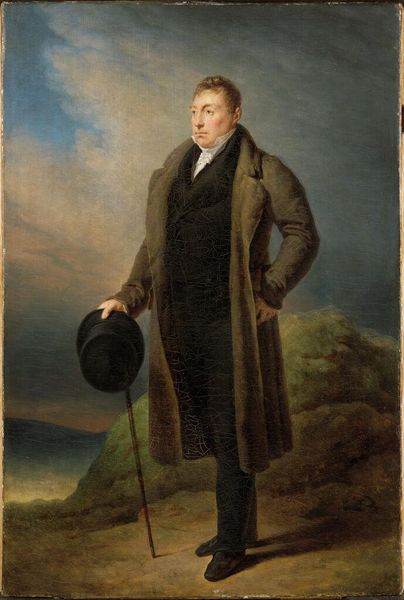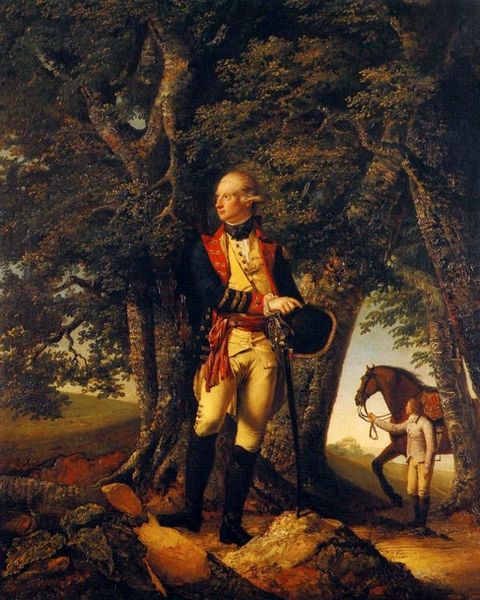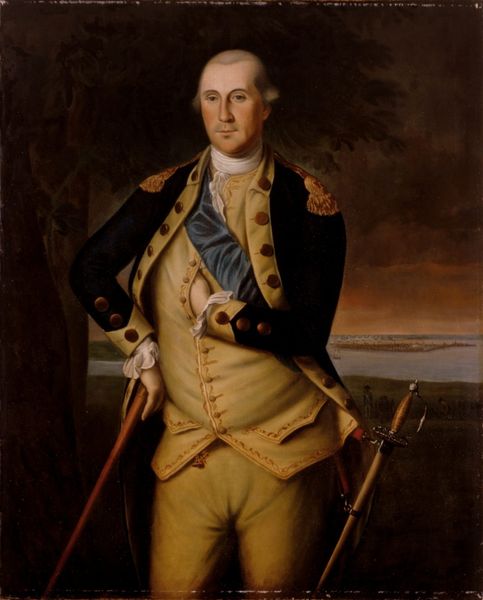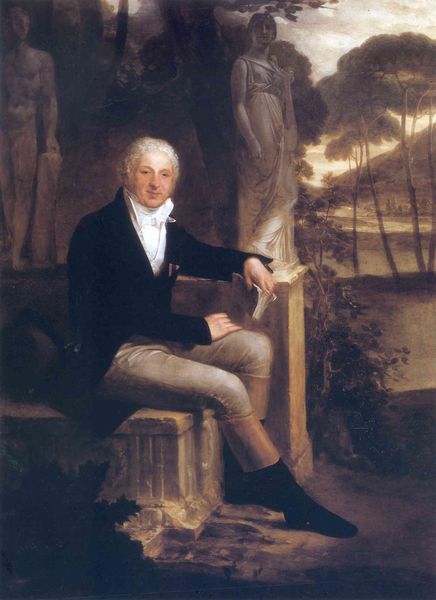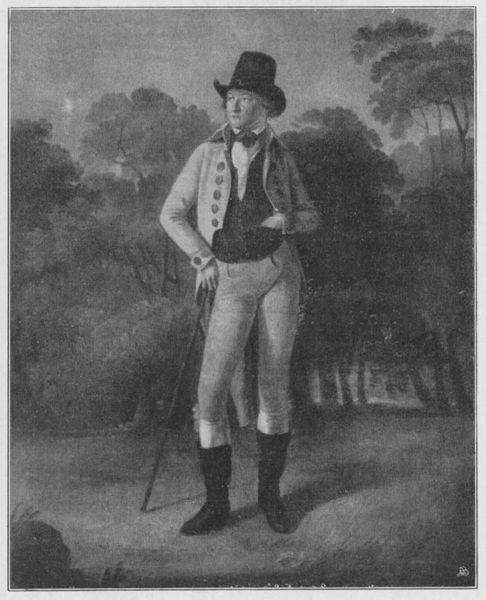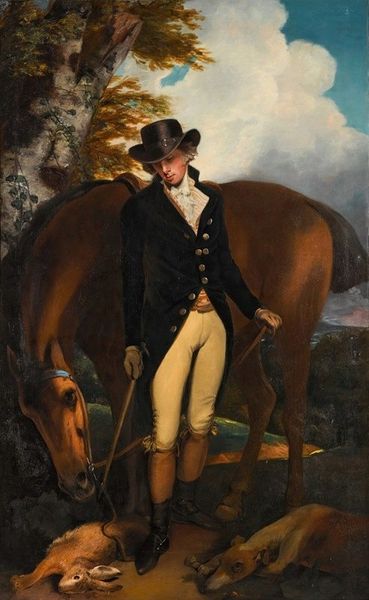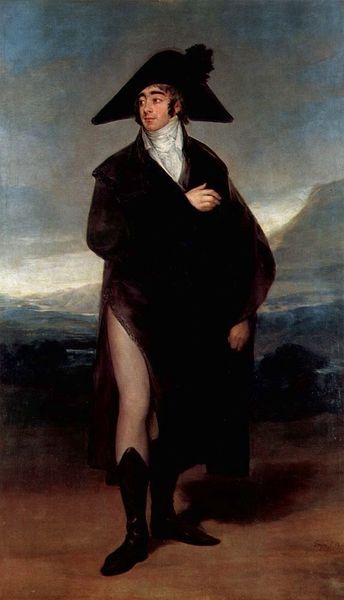
Copyright: Public Domain: Artvee
Curator: Standing before us is "William Johnstone-Pulteney, later fifth Lord Pulteney," a portrait masterfully rendered around 1772 by Thomas Gainsborough. He captured not just a likeness but an atmosphere, as we see in this landscape portrait in oil. Editor: It's interesting to see how pale everything is—the colors are subdued. A brown gloom in the lower-left—suggests decay, yet his stockinged calves look particularly clean. Is that just my impression? Curator: The figure posed against nature—a compositional style emblematic of Romanticism, though hints can be traced far back. Pulteney isn't merely placed within a landscape; rather he is integrated. The subtle mirroring of the color from Pulteney's coat, in the rocks behind, underscores the sitter's world. The artist, who worked mostly as a landscape painter, made the outdoor realm as crucial as the person depicted. Editor: Makes me think of ideas of man within nature... as a cultivated participant of, yet somehow outside it. There's an implicit comment on class. He looks melancholic but very neat! His cane and hat imply travel and leisure. A little contradictory. The Romantic era must have loved these contradictions! Curator: Absolutely. Note, too, the psychological insight embedded in these visual symbols. Consider the trees, the background against which human dramas unfold. They symbolize not only the physical landscape, but the internal states mirroring human emotion and endurance. It resonates with themes of nostalgia, identity, and perhaps even a sense of sublime solitude. Editor: Yes! Sublime solitude. That's precisely it! It all somehow feeds into this very fashionable pose—the stance, the carefully disheveled air. Everything works together so compellingly that one could completely forget the socio-cultural impact. All this just to remind everyone else he is wealthy. How sad! Still, that's just what I am projecting, it might be the lighting tricking me too. Curator: It reveals layers. Cultural memory certainly finds expression in these repeated tropes. This era loved nature, even as it simultaneously showed how distanced nobility was from it. We find lasting archetypes of class, leisure and connection to nature. Editor: Fascinating how images still speak after centuries, provoking debate. Curator: Indeed; these subtle arrangements contain lasting symbolic potential.
Comments
No comments
Be the first to comment and join the conversation on the ultimate creative platform.
